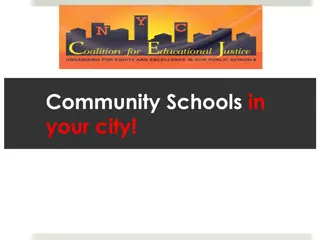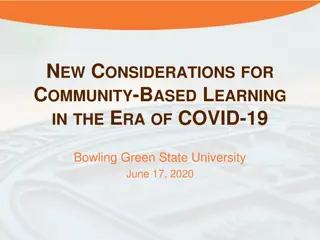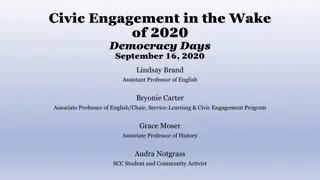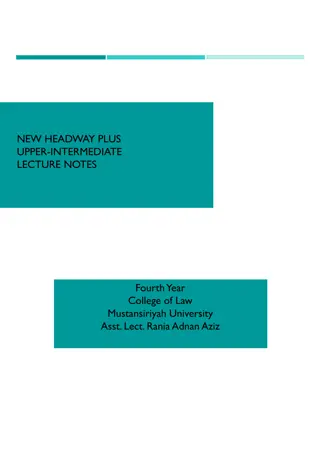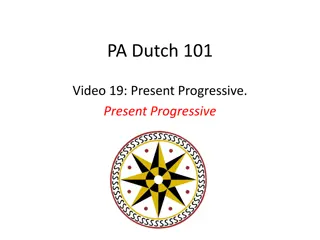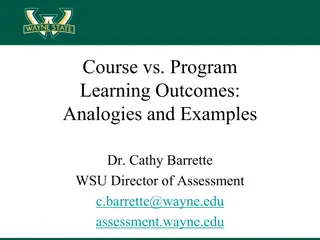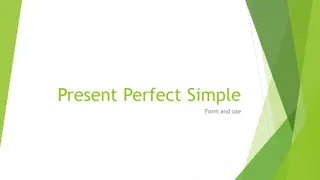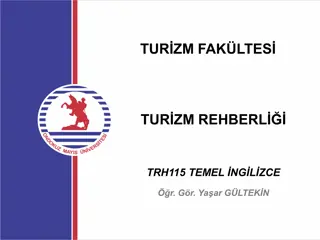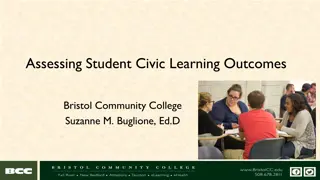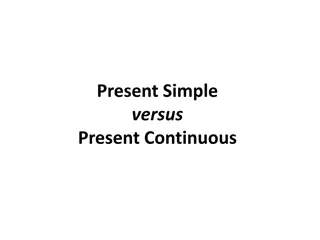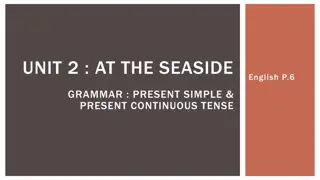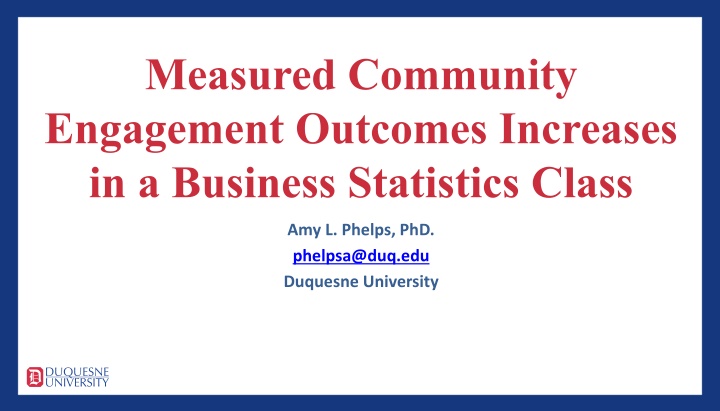
Enhancing Community Engagement Outcomes through Business Statistics Class at Duquesne University
"Learn how Duquesne University integrates service-learning pedagogy and educational reform to enhance student engagement and statistical literacy in a business statistics class. Explore the perfect intersection between academia and community through real-world data gathering. Discover the impact of GAISE requirements and thinking with data on fostering civic responsibility and student learning in a diverse and inclusive environment."
Download Presentation

Please find below an Image/Link to download the presentation.
The content on the website is provided AS IS for your information and personal use only. It may not be sold, licensed, or shared on other websites without obtaining consent from the author. If you encounter any issues during the download, it is possible that the publisher has removed the file from their server.
You are allowed to download the files provided on this website for personal or commercial use, subject to the condition that they are used lawfully. All files are the property of their respective owners.
The content on the website is provided AS IS for your information and personal use only. It may not be sold, licensed, or shared on other websites without obtaining consent from the author.
E N D
Presentation Transcript
Measured Community Engagement Outcomes Increases in a Business Statistics Class Amy L. Phelps, PhD. phelpsa@duq.edu Duquesne University
Duquesne University is an urban Catholic University, founded by Spiritans commitment to excellence in liberal and professional education, concern for moral and spiritual values, through the maintenance of an ecumenical atmosphere open to diversity, and through service to the Church, the community, the nation, and the world. Core service-learning requirement JSM 2016 Chicago 2
Service-Learning Pedagogy A teaching method that combines: academic instruction meaningful service critical reflective thinking to promote STUDENT LEARNING and CIVIC RESPONSIBILITY under which students apply particular concepts to real-life situations (Furco 2003) JSM 2016 Chicago 3
Educational Reform Student Engagement Angelo and Cross (1993) students learn more when they take an active role Newmann (1992) combining traits of purpose and caring: psychological investment Statistical reform GAISE provide students real world data and give meaning to our discipline Authentic Assessments Get them to write/communicate Crowley (1993), Garfield (1994), Chance (1997) SL in statistics Thorne & Root (2001,2002), Jersky (2002), Gordon (2004), Hydorn (2007), Phelps (2008,2012) JSM 2016 Chicago 4
GAISE Requirements 1. Emphasize statistical literacy and develop statistical thinking. 2. Use real data. 3. Stress conceptual understanding rather than mere knowledge of procedures. 4. Foster active learning in the classroom. 5. Use technology for developing concepts and analyzing data. 6. Use assessments to improve and evaluate student learning. With 2014 guidelines emphasizing Thinking with data JSM 2016 Chicago 5
Thinking with Data In the context of answering a statistical question Stress the importance of data science (business analytics) Real applications Diverse modeling Ability to Communicate!
Perfect Intersection Students gathering/obtaining real-life data from an organization/nonprofit in need satisfies: 1. University mission w/ community at its core 2. Providing a service while learning statistics thus applying all steps of data analysis/problem solving in real time; 3. Satisfies all previous GAISE recommendations while Thinking with Data ! **write, present, communicate** JSM 2016 Chicago 7
An Opportunity In 2013, we were in need of assessing our university core SL requirement Pre/post survey developed based on 6 scaled community-engagement outcomes: Critical thinking (18 questions, sum scaled -36 to 36) Engaged Learning (7 questions, sum scaled -14 to 14) Engagement with local issues and engagement with national issues (5 each) Civic Engagement (10 questions, scaled 0 to 40) Social Responsibility (10 questions, scaled -20 to 20) Scales adopted from the Bringing Theory to Practice Project, Eyler & Giles (1999) Where s the Learning in Service-Learning, and the Wabash National Study. http://www.aacu.org/bringing_theory/index.cfm JSM 2016 Chicago 8
Sampling Frame Campus-wide: 18 SL classes and 3 nonSL classes were offered the survey ~ 300 SL paired responses, ~ 60 nonSL paired responses 26% response rate completed pre/post Business Statistics: 1 SL class and 2 nonSL classes, taught by same professor (me) 25 SL paired responses, 46 nonSL paired responses 70% response rate completed pre/post JSM 2016 Chicago 9
Business Statistics Paired pre/post responses allowed me to: Measure potential mean gains in my business SL students Mean gains in post responses allowed me to: Compare my business SL students to the university SL students Compare my nonSL business students to my SL business students JSM 2016 Chicago 10
Critical Thinking: SL(y/n) Sample Diff. Std. Err. DF T-Stat P-value No Yes 1.93 2.6 1.01 1.45 45 24 1.91 1.79 0.0314 0.0429 Both SL and nonSL business statistics groups significantly increased their scaled responses measuring a preference for critical thinking; However, the larger mean gain in the SL group was not significantly more than the nonSL group. JSM 2016 Chicago 11
National Community Engagement (Local community engagement) SL(y/n) Sample Diff. Std. Err. DF T-Stat P-value No -0.133 0.452 44 -0.294 0.6152 Yes 1.04 0.599 24 1.738 0.0476 Significant mean gains in national community engagement in the SL group only. Marginally significant (0.08) gains in local community engagement in the SL group. 12 JSM 2016 Chicago
Non-significant mean gains Although mean gains were higher in the SL group compared to the nonSL group in all scales (except civic engagement), no paired t-tests produced a significant gain in: Engaged Learning Civic Engagement Social Responsibility JSM 2016 Chicago 13
Comparing SL to nonSL There were no statistically significant mean increases in the SL (n=25) group compared to the nonSL (n=45) in any of the six scales; However, the mean gain in the SL group was marginally significant for: National Community Engagement (p = 0.062) Social Responsibility (p = 0.082) JSM 2016 Chicago 14
University-wide results When compared to the nonSL group, the SL group demonstrated: 1. A significant mean increase in: preference for critical thinking, p<0.0001. local community involvement, p<0.0001. national community involvement, p=0.0006. 2. A marginally significant increase in engaged learning, p=0.07, with males experiencing a significant increase, p = 0.04. 3. No significant change in civic engagement or social responsibility. JSM 2016 Chicago 15
Summary Students participating in a SL business statistics class demonstrated a significant (paired) increase in: preference for critical thinking. (nonSL students did also) National community engagement issues demonstrated a marginally significant (paired) increase in: Local community engagement issues demonstrated a marginally significant increase compared to nonSL business statistics class in (t-test comparing mean gains): National community engagement issues Social Responsibility JSM 2016 Chicago 16
Take Home Message While not overwhelmingly suggestive that a single hit of a SL class will change the world and help all students learn statistics, These results do provide additional evidence that SL pedagogy, which is aligned with best teaching practices, is doing good and certainly not harmful. Forcing them to Think with real life data JSM 2016 Chicago 17
You are invited! If you are interested in improving statistics instruction for business students, please consider joining the Statistics in Business Schools Interest Group, SIBSIG Why? It s free! Meet others teaching statistics in business schools at our business meeting When: Tuesday, 8/2/2016 from 4:00 5:00 pm Where: CC-N129, McCormick Place Convention Center North Building






